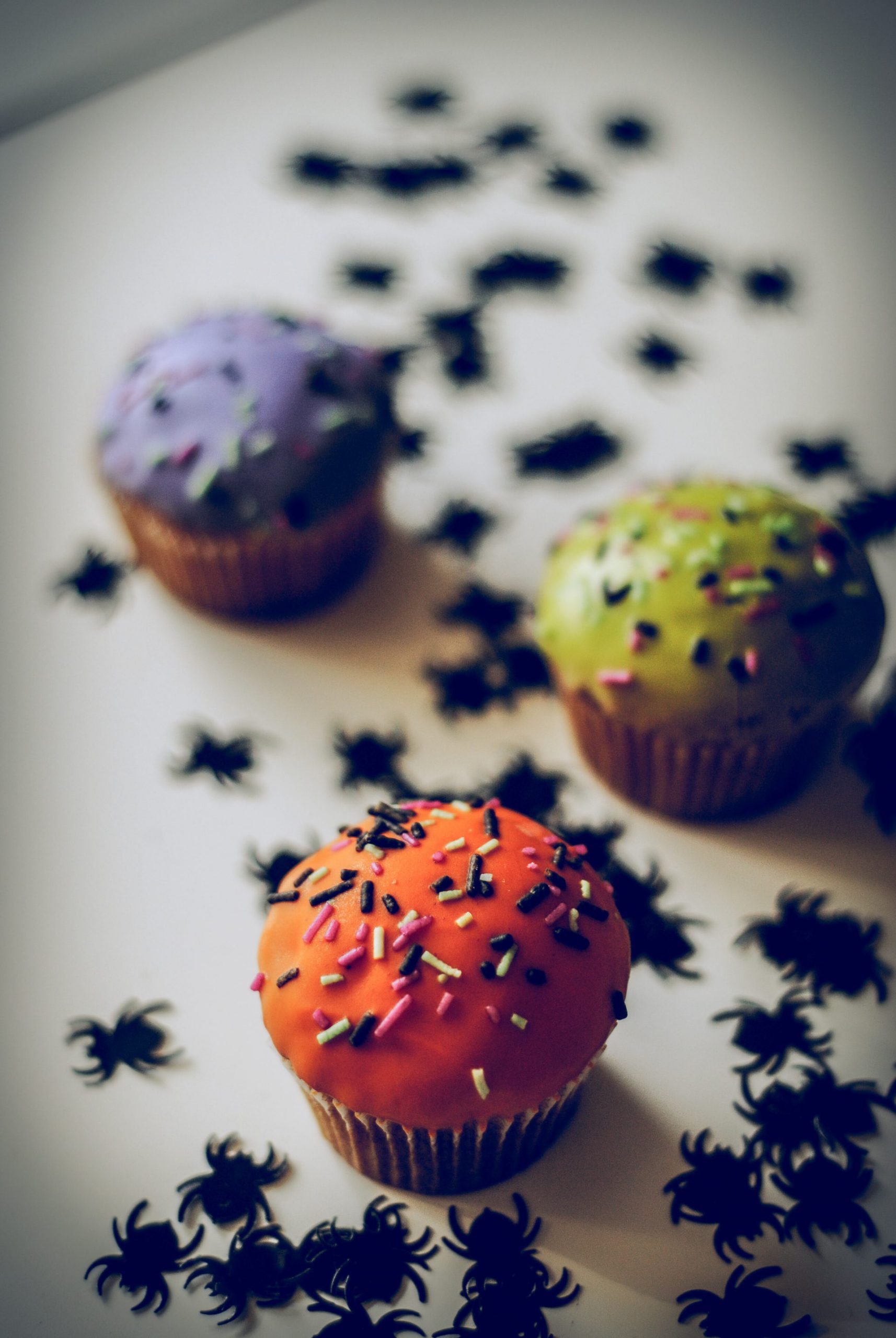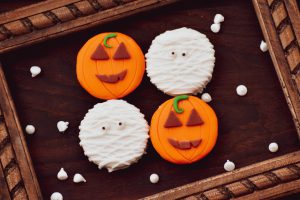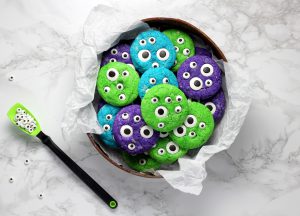
- Readers Rating
- No Rating Yet!
- Your Rating
Halloween is approaching, the season when everything turns orange, black, red and white. Houses are filled with ghosts and pumpkins, and children have free rein to eat all the candy they want. It is clear that this festival is well established internationally, so in this mentta blog article we show you the most monstrous Halloween recipes to surprise your guests. Take note and get your oven ready.
Origin of Halloween
Halloween, as it is celebrated today, has its roots in several ancient traditions and festivals. The word “Halloween” comes from the Old English phrase “All Hallows’ Eve”, meaning “All Hallows’ Eve”. It is a holiday that has evolved over the centuries from a combination of Celtic traditions, Christian religious festivals and other cultural influences. Today, Halloween is a celebration full of costumes, candy and themed activities that mix traditional and modern elements. The main origins and elements that contributed to the development of Halloween are:
- Celtic Samhain: The basis of Halloween is found in the Celtic festivities of Samhain, which marked the end of summer and the beginning of winter in ancient Ireland and Scotland. It was believed that at this time of year, the veil between the world of the living and the dead was thinned, allowing spirits to return to the earthly world. The Celts performed rituals to honour the dead and protect themselves from evil spirits.
- All Saints’ Day: The Catholic Church established All Saints’ Day on 1 November as a holiday to honour saints and martyrs. The eve of this celebration, 31 October, became “All Hallows’ Eve”, which was eventually shortened to Halloween.
Other influences…
- Roman influences: The Romans also contributed to the development of Halloween through the festivals of Feralia (dedicated to honouring the dead) and Pomona (dedicated to the goddess of fruits and trees, whose symbol was the apple). Elements of these festivals were mixed with Celtic traditions.
- Christianisation of pagan festivals: As Christianity spread across Europe, the Church tried to replace pagan festivals with Christian celebrations. All Saints’ Day and All Souls’ Day (2 November) were established as dates to honour the dead.
- Immigration to America: With European migration to America, Halloween traditions became even more mixed. In the United States, in particular, Halloween festivities merged with influences from various cultures, including Irish and British.
- Commercialisation and modernisation: In the late 19th and early 20th centuries, Halloween began to take on the more commercial and modern form we know today. Activities such as trick-or-treating, the use of costumes and spooky-themed decorations became popular.
Buy edible Halloween decorations

Halloween recipes
During this holiday you can prepare a large number of dishes that will leave your guests open-mouthed. It is very easy to imitate the symbols of this holiday with food, which is why we leave you here a few Halloween recipes to prepare:
Witches’ fingers
- Ingredients:
– Pretzel sticks
– Almond slices
– Sugar biscuit dough - Instructions:
1. Cut the biscuit dough into finger shapes.
2. Place a pretzel stick at one end to simulate a fingernail.
3. Press an almond slice on the other end to resemble the tip of a finger.
4. Bake according to the biscuit dough instructions.
Mandarin pumpkins
- Ingredients:
– Mandarin oranges
– Celery stalks - Instructions:
1. Peel the mandarins and separate the segments.
2. Cut the celery stalks into small pieces.
3. Insert a piece of celery into the top of each mandarin to simulate a pumpkin stalk.
Spider cupcakes
- Ingredients:
– Chocolate cupcakes
– Buttercream frosting (can be black, orange or any Halloween colour)
– Pretzels (for the legs)
– Edible pearls or chocolate drops (for the eyes) - Instructions:
1. Cover the cupcakes with your chosen frosting.
2. Cut the pretzels into pieces to simulate the legs of the spiders and place them on the sides of the cupcake.
3. Place edible pearls or chocolate drops on top for the eyes.
Spooky sangria
- Ingredients:
– Red wine
– Orange soda
– Fruit slices (apples, oranges, grapes)
– Lemon slices
– Lemon-lime soda
– Ice cubes with gummy worms - Instructions:
1. Mix the red wine, orange soda and fruit slices in a pitcher.
2. Add the lemon slices and lemon-lime soda just before serving. 3.
3. Serve in glasses with ice cubes containing gummy worms.
Spider Cookies
- Ingredients:
– Round biscuits (can be store-bought or homemade).
– Melted chocolate
– Chocolate drops (for the eyes)
– Pretzels (for the legs) - Instructions:
1. Melt the chocolate and place a small amount in the centre of each biscuit.
2. Place the chocolate drops in the melted chocolate to make the eyes.
3. Break the pretzels into pieces and place them around the biscuit to make the legs of the spider.

Traditional Halloween recipes in other countries
Here are some traditional Halloween foods from different countries:
- United States – Caramel Apples:
Caramel apples are a classic part of Halloween celebrations in the United States. Apples are dipped in liquid caramel and then allowed to cool to create a crunchy, sweet coating. - Mexico – Calaveras de Azúcar (Sugar Skulls):
Sugar skulls are traditional Day of the Dead sweets in Mexico. These sugar skulls, decorated with vibrant colours and intricate designs, honour deceased loved ones. - Ireland – Barmbrack:
Barmbrack is a traditional fruit loaf in Ireland during Halloween. It contains sultanas and dried fruits that are soaked in black tea before baking. - United Kingdom – Parkin:
Parkin is a traditional gingerbread cake eaten at Halloween in some parts of the UK, such as Yorkshire. It has a spicy flavour and is often served with cream or butter.
More countries with tradition…
- Canada – Tourtière:
Although not specifically a Halloween food, tourtière, a traditional meat pie in Quebec, Canada, is often part of the autumn festivities and can be enjoyed at this time of year. - Scotland – Neeps and Tatties:
Neeps and tatties is a traditional Scottish side dish consisting of mashed turnip (neeps) and potato (tatties). It is commonly served with haggis during festivities such as Halloween. - Japan – Oden:
In Japan, oden is a hot stew eaten in autumn and can also be part of Halloween celebrations. It is prepared with ingredients such as tofu, fish, egg and daikon (Japanese radish). - Ireland – Colcannon:
Colcannon is a traditional Irish dish of mashed potatoes mixed with kale or cabbage. On Halloween, it is common to hide a ring and other little surprises in the colcannon for fun while eating. - Sweden – Lussebullar:
Lussebullar are traditional saffron buns in Sweden that are sometimes also enjoyed in autumn, although it is more associated with the celebration of St. Lucia in December.
Each country has its own traditions, foods and recipes for Halloween and the autumn season. These foods reflect the cultural diversity and unique celebrations in different parts of the world.
